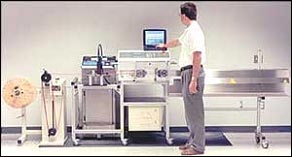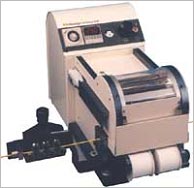In the Wire and cable industry, various types of
pigments are used to color polyolefins. Mainly they are employed for
Wire Identification Methods. As in cables, it can be seen the coloring
done on the outer layer is govened by a different set of requirements as
from the inner layers. Pigments that are used in the wire and cable
industries can be of two types inorganic and organic. Newer alternatives
that are coming in to the market are known as the "mixed-phase
metal oxide" pigments. Examples can be given of, yellow nickel
titanates and blue and green cobalt aluminates. A relatively new entrant
is the brilliant yellow bismuth vanadate. Organic pigments are also used
but not as popular because they are more difficult to disperse than
inorganic ones leading to possible loss in mechanical strength.
Some common examples are given in this table.
| Pigment |
Colour |
Application |
Titanium
dioxide |
White |
Used in Variety of resins |
| Zinc sulphide |
White |
Wide use |
| Iron oxides |
Red, yellow, brown, and black |
Wide use |
| Lead chromates and lead chromate molybdates |
Colours can include bright yellow and orange |
Good use |
| Cadmium |
Comes in reds, yellows, oranges and maroons |
Excellent for engineering resins |
| Chromium oxides |
Green |
Shows good heat and light fastness, variety of
uses |
| Ultramarines |
Comes in blue, pink and violet shades |
Works in a wide gamut of resins |
In moden Wire and cable industry, there is a constant
need for effective wire identification. For our subject of discussion we
will limit our discussion to just two methods of wire identification.
 Inkjet
Marking-
Inkjet
Marking- Inkjet technology has vastly improved over the years. With
features of less maintenance and faster start-ups, Inkjet marking
systems are now more reliable and user friendly. For the wire and cable
industry, a dye or pigmented ink, with an Methyl Ethyl Ketone base is
applied.

 Hot
Stamp Marking-
Hot
Stamp Marking- Hot stamp marking is still among the most inexpensive
techniques for wire identification and is perhaps with exception of
laser the only viable option for marking of the Teflon insulated wire.
Four important factors here are correct air pressure, dwell time, wheel
temperature, and lastly foil. Use of pigments come in the foil part. The
foil comprises of a backing and pigment. The pigment gets transferred to
wire insulation through the heat emanating from the character wheels. It
is vital to note here that certain types of pigments can stick to only
particular substrates and would need different temperatures to transfer
them.



